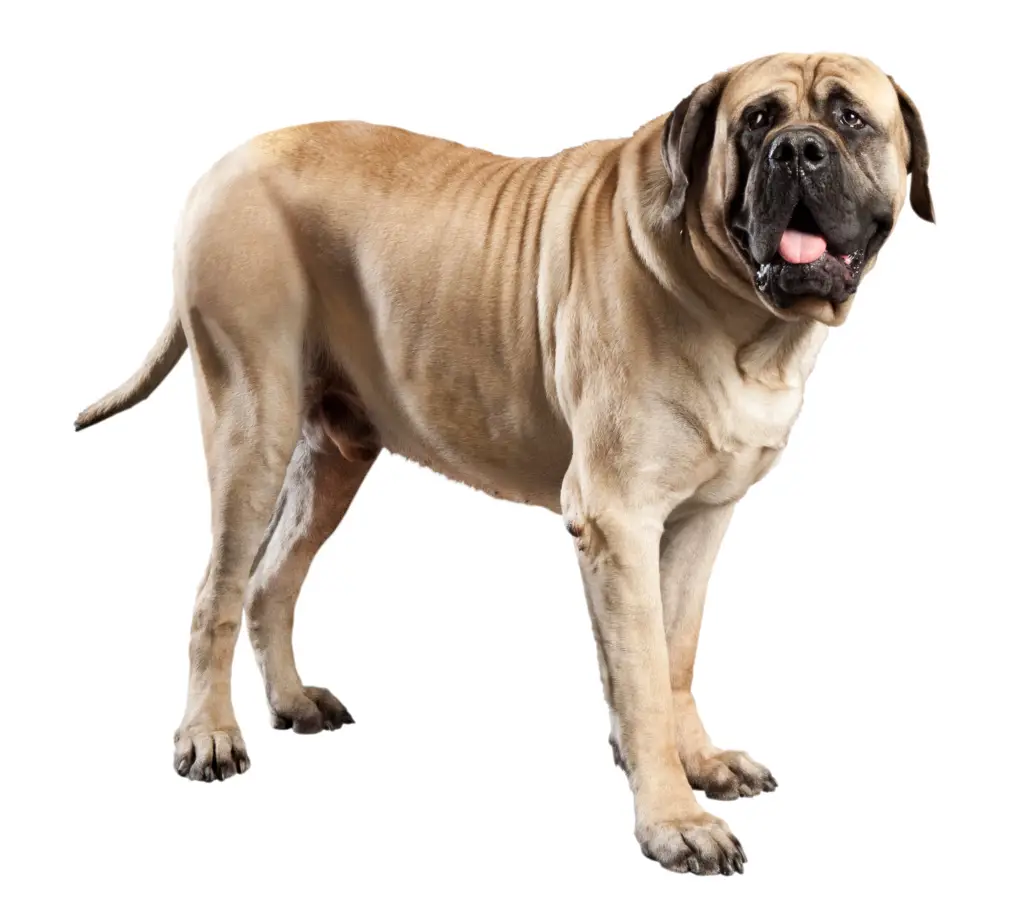Dogs have long been considered loyal companions and faithful friends, but did you know that some specific breeds are actually mentioned in the Bible?
From courageous guard dogs to humble shepherds’ companions, these ancient breeds have left their mark on history. Join us as we explore which dog breeds are specifically referenced in the pages of the Good Book.
Introduction to Dogs in the Bible
Dogs are one of the most beloved and popular animals in the world. They have been domesticated by humans for thousands of years and have become a part of our daily lives as loyal companions, protectors, and helpers. But did you know that dogs also hold a special place in the Bible? Take a look at this handy guide of canine breeds and where each one gets its bible mention.
The Bible is full of references to dogs, with over 40 mentions throughout its various books and verses. Dogs were commonly used as working animals in Biblical times, such as hunting companions or guard dogs for livestock. They were also seen as scavengers who roamed the streets looking for food.
In this section, we will delve into some of the key roles and symbolism that dogs play in the Bible, as well as explore which dog breeds are specifically mentioned.
Roles of Dogs in the Bible:
Throughout history, dogs have been known for their loyalty, courage, and intelligence – traits that are often highlighted in their portrayal within biblical texts. In many instances, they are depicted as being faithful companions to their owners or masters.
One notable example is found in 1 Kings 14:11 where it is stated that “anyone belonging to Jeroboam who dies in the city will be eaten by dogs, anyone who dies in the open country will be eaten by birds.” This passage illustrates how wild or stray dogs were viewed as unclean animals who would consume human remains.
Additionally, several verses mention using trained hunting hounds for tracking prey (Job 30:1) or guarding flocks (Isaiah 56:10). These references showcase how valuable and essential these animals were to everyday life during biblical times.
The symbolism of Dogs in the Bible:
In addition to their practical uses, dogs also hold important symbolic meanings within biblical texts. For instance, they are often associated with danger or evil due to their scavenging nature. The term ‘dogs’ is even used as an insult in some verses, such as Philippians 3:2 where it states “beware of dogs, beware of evil workers.”
On the other hand, dogs are also portrayed as symbols of faithfulness and protection. In Revelation 22:15, it is written that “outside [the gates of heaven] are the dogs…those who practice magic arts,” implying that those who do not have a faithful and obedient nature will not enter the kingdom of God.
Specific Dog Breeds Mentioned in the Bible:
While specific dog breeds were not identified by name in the Bible, there are some theories about which types of dogs may have been referenced. For example, many scholars believe that the word ‘dog’ in biblical texts could refer to various types of hunting and herding dogs commonly found in ancient Israel. Some of these dogs are what we now know as greyhound-type dogs.
The role of dogs in biblical times
Dogs have been man’s faithful companions for centuries, and their role in society has evolved. From hunting partners to loyal pets, dogs have played a significant role in human history. In addition to this, dogs also hold a special place in biblical times.
The Bible mentions several dog breeds that were present during those times. One of the most well-known mentions is found in the Book of Revelation where it states, “Outside are the dogs and sorcerers and the sexually immoral and murderers and idolaters, and everyone who loves and practices falsehood” (Revelation 22:15). This verse refers to wild or feral dogs roaming outside the city walls as scavengers, often associated with impurity or uncleanliness.
In ancient times, dogs were considered unclean animals by many cultures. For instance, Egyptians believed that dogs were sacred creatures because they were associated with Anubis (the god of death) while Israelites viewed them as unclean due to their scavenging nature. However, despite these beliefs, dogs still had an important role to play in biblical times.
One of the primary roles of dogs during this period was guarding property and livestock. Unlike today’s domesticated breeds that are primarily used for companionship or specific tasks such as hunting or herding, ancient dog breeds served more utilitarian purposes. They would often be left outside at night to protect their owner’s homes from intruders or predators. One of the earliest known depictions of a guard dog can be found on an Assyrian palace relief dating back to 640 BC.
Furthermore, some biblical stories also mention specific dog breeds by name such as greyhounds being referenced as “whippets” in Proverbs 30:31 which states “a greyhound; A male goat also; And a king whose troops are with him”. The term whippet here is believed to refer to a breed of sighthound, similar to modern-day greyhounds.
Dogs also had a role in warfare during biblical times. The Israelites would often use dogs as part of their army, and they were known for their fierce loyalty and bravery on the battlefield. In Judges 7:5, Gideon is instructed by God to send home any soldiers who lapped water like a dog while drinking from the same river as him. This technique was used to determine which soldiers would be most vigilant on the battlefield.
Dogs played a significant role in biblical times, whether it was guarding property, assisting in warfare, or being mentioned in religious texts. Despite being viewed as unclean by some cultures, these loyal animals were an integral part of ancient society and continue to hold a special place in our hearts today.
Dog breeds specifically mentioned in the Bible:
Several dog breeds have been specifically mentioned in the Bible, with each breed serving a unique purpose and playing a significant role in biblical stories. Dogs were frequently mentioned both in the Old and New Testament. Let’s take a closer look at these faithful companions and their significance in the Bible. Let’s take a look at some of the oldest dog breeds and the mention of dogs in the old testament.
1. Greyhound: The greyhound breed is one of the most commonly mentioned breeds in the Bible, often referred to as “the swift” or “the fast.” These dogs were known for their speed and agility, making them ideal for hunting and guarding. Proverbs 30:29-31, says, “There are three things that are stately in their stride; four that move with stately bearing: a lion, mighty among beasts…a greyhound strutting boldly.” This verse highlights the grace and elegance of this breed.
2. Saluki: Another breed known for its speed is the Saluki, which has been referenced as “the gazelle” or “the deer” in the Bible. In 2 Samuel 22:34 and Habakkuk 3:19, it says, “He makes my feet like those of a deer; he enables me to stand on heights.” This verse symbolizes God’s strength and guidance through difficult times.
3. Mastiff/English Bulldog: One of the most famous instances of a specific dog breed being mentioned in the Bible is when David faced Goliath with his trusty bulldog by his side. In 1 Samuel 17:43-44 it says, “He said to David, ‘Am I a dog that you come to me with sticks?’ And he cursed David by his gods…David replied to him…’I will strike you down and cut off your head.'” Although not explicitly stated which breed was present during this iconic battle scene, many scholars believe it was an English Bulldog or Mastiff due to their reputation as fearless protectors.
4. Sheepdog (Akdal): In the book of Luke, there is a parable about a lost sheep and the shepherd who left his flock to find it. This story symbolizes God’s love for his people, always willing to go above and beyond to bring them back into His loving arms. This parable, mentions the sheepdog or “akdal” that would have been used by shepherds during biblical times to help guide and protect their flock.
5. Assyrian Mastiff: This ancient breed is referenced in Isaiah 18:1 where it says, “Woe to the land of whirring wings along the rivers of Cush.” The phrase “whirring wings” was often used metaphorically in biblical times to describe the fierce Assyrian armies. The reference to this powerful breed serves as a warning of impending danger.
These are just a few dog breeds that are specifically mentioned in the Bible with profound significance. It goes to show that even thousands of years ago, dogs held an important place in society and played various roles as loyal.
Greyhound (Proverbs 30:31)

The greyhound is a breed of dog that has been specifically mentioned in the Bible, with its appearance in Proverbs 30:31. This biblical reference describes the greyhound as one of the four things that move gracefully, along with the lion, rooster, and goat.
In ancient times, greyhounds were highly valued for their speed, agility, and grace. They were often used for hunting and racing purposes by royalty and nobility. There are many depictions of greyhounds in ancient Egyptian art and tombs, showcasing their significance in society.
The mention of the greyhound in Proverbs 30:31 can be interpreted as a symbol of strength and elegance – something we still recognize as a greyhound character today. The verse states “A greyhound; A male goat also; And a king whose troops are with him,” which can be seen as a representation of kingship or leadership. The comparison between these three figures suggests that just like a swift greyhound or strong male goat leading his pack, a wise king should also lead his people with grace and power.
Furthermore, this verse highlights the qualities associated with the modern greyhound such as swiftness, agility, and loyalty. These traits have made them not only popular hunting companions but also beloved pets throughout history.
In addition to its mention in Proverbs 30:31, there are other references to greyhounds in the Bible. For instance, Psalm 104:10 mentions how God gives food to every creature including “the young lions roar after their prey” which could refer to the swift movements of hunting dogs like greyhounds chasing after their prey.
Greyhounds are also believed to be referenced in Job 41:19-21 which describes an animal’s ability to run without fear or hesitation on land or water. This passage has been interpreted by some scholars as describing an agile creature similar to a swift-running dog like the greyhound.
In modern times, while greyhounds are still used for hunting and racing, they have also become popular as family pets due to their gentle and calm nature. They are known to be affectionate, loyal, and intelligent dogs that make great companions.
The mention of the greyhound in Proverbs 30:31 showcases the significance of this breed in ancient times. It serves as a symbol of strength, agility, and loyalty, reminding us of the importance of these qualities in our own lives. Today, greyhounds continue to be admired and loved by many as both working dogs and beloved pets.
Mastiff (Deuteronomy 28:26)

Mastiffs are one of the oldest and most well-known dog breeds mentioned in the Bible. This powerful breed is believed to have originated in ancient Mesopotamia, and their name comes from the Latin word “mastinus”, meaning “large”. In Deuteronomy 28:26, mastiffs are referenced as one of God’s punishments for disobedience.
In the Bible, mastiffs are often referred to as large, strong, and fierce dogs. They were primarily used for guarding livestock and protecting homes from intruders. These massive dogs were highly valued for their strength and loyalty, making them a symbol of wealth and power.
The mention of mastiffs in Deuteronomy 28:26 is part of a passage that describes God’s wrath upon those who disobey his commandments. The verse reads: “Your carcasses shall be food for all birds of the air and the beasts of the earth, with no one to frighten them away.” This was seen as a severe punishment because it meant that even these mighty dogs would not protect their owners’ bodies after death.
This reference to mastiffs shows how revered this breed was in ancient times. They were considered an essential part of society, not only for protection but also as companions. Mastiffs were often depicted in artwork during biblical times, further cementing their significance and the power of the dog.
Additionally, mastiffs are also believed to be referenced indirectly in other verses throughout the Bible. In Proverbs 30:30-31 it states: “There are three things which are stately in their march; four which move with stately bearing – a lion striding fiercely forward…a king resolute advancing at its head”. Many scholars interpret this verse as referencing both lions and mastiffs due to their similar physical appearance and reputation for strength.
Today, mastiff breeds still hold many characteristics described in the Bible – they remain loyal guard dogs with immense strength and protective instincts. However, they are also known for their gentle nature and make excellent family pets if trained and socialized properly.
The mention of mastiffs in Deuteronomy 28:26 serves as a reminder of the value placed on these magnificent creatures in biblical times. They were seen as protectors and symbols of strength, reflecting God’s power and protection over his people. Mastiffs continue to hold a special place in our hearts and homes today, making them one of the most remarkable dog breeds mentioned in the Bible.
Whippet (Isaiah 56:10)

The Whippet is a breed of dog that is specifically mentioned in the Bible, in Isaiah 56:10. This passage refers to the Whippet as a “watchdog” or “guard dog” and highlights its loyalty and protective nature.
The Whippet is a sighthound breed that originated in England during the mid-19th century. They were originally bred for hunting small game such as rabbits, but they quickly gained popularity as racing dogs due to their speed and agility. Today, they are also commonly kept as companion pets due to their gentle quiet disposition and affectionate nature. Often identified as the smaller model of a greyhound with a slender waist, deep chest, and short fur. They are delicate, little dogs – often seen depicted in old paintings from the early 17th century.
In Isaiah 56:10, the Whippet is described as a watchdog or guard dog. This speaks to its natural instinct to protect its family and territory. In ancient times, dogs were often used as guardians for flocks of sheep or other livestock, and it was essential for them to be vigilant against potential threats. The mention of the Whippet in this biblical passage suggests that even back then, this breed was recognized for its strong guarding abilities.
Furthermore, the verse goes on to emphasize the faithfulness of this breed by stating that they do not sleep or lie down while keeping watch over their master’s house. This highlights another characteristic of Whippets – their high level of energy and alertness. They are known for being constantly on guard and ready to spring into action at any sign of danger.
Aside from their protective instincts, the mention of Whippets in this biblical passage also sheds light on their value within society during ancient times. Dogs were highly valued animals in many cultures, including those mentioned in the Bible. They played significant roles in daily life – from herding livestock to providing companionship and protection for families.
The inclusion of Whippets in Isaiah 56:10 showcases not only their physical attributes but also their role within society during ancient times. Their loyalty and protective nature have been recognized since biblical times and continue to be valued in this breed today. Whether as a working dog or a beloved family pet, the Whippet remains a steadfast and faithful companion.
Saluki (Sudanese hound) (Jeremiah 14:6)

The Saluki breed, also known as the Sudanese hound or Arabian greyhound, is a breed of dog that has a deep connection to ancient civilizations and is even mentioned in the Bible. This elegant and graceful breed has been valued for its speed, agility, and hunting skills by various cultures throughout history.
Originating from the Fertile Crescent region in the Middle East, the Saluki is believed to have been developed by nomadic tribes as a hunting companion. They were highly prized by Egyptian pharaohs and were often depicted in their artwork. In fact, mummified remains of Salukis have been found buried alongside their owners in ancient tombs.
In the Bible, the Saluki is specifically mentioned in Jeremiah 14:6 as one of the animals that mourned during times of famine. The passage reads: “And wild donkeys stand on barren heights; they pant for air like jackals; their eyes fail because there is no vegetation.” (ESV) In this verse, wild donkeys are used as a metaphor for people who are suffering due to drought and famine. The mention of “wild donkeys” can be translated to mean “wild dogs” or “hounds,” which could refer to Salukis.
This biblical reference further highlights the significance of this noble breed in ancient societies where they were used for hunting and protection. Their keen sense of smell and exceptional speed made them valuable assets for nomadic tribes who relied on them for survival.
Even today, Salukis are still highly regarded in many parts of the world as skilled hunters and loyal companions. They possess an athletic build with long legs built for running at high speeds – therefore prospective dog purchasers should consider the exercise requirements of the Saluki breed. Their distinctive silky coat comes in a variety of colors such as white, cream, fawn, red, black, or tan.
As pets, Salukis are known to be gentle yet independent creatures who form strong bonds with their owners. While they may be reserved with strangers, they are fiercely loyal and protective of their families. They require regular exercise and plenty of space to run, making them better suited for homes with large yards.
The Saluki is a breed that has stood the test of time and continues to be revered by many cultures around the world. Its mention in the Bible serves as a testament to its enduring legacy as a beloved companion and skilled hunter.
Basenji (Congo dog) (Proverbs 30)

The Basenji, also known as the Congo dog, is a unique breed that has been specifically mentioned in the Bible. This ancient breed originated from Central Africa and was highly valued by the people of the Congo for its hunting abilities.
One of the most notable mentions of the Basenji in the Bible can be found in Proverbs 30:29-31, which reads “There are three things that are stately in their stride, four that move with stately bearing: a lion, mighty among beasts, who retreats before nothing; a strutting rooster, a he-goat and a king secure against revolt.” The mention of a “strutting rooster” is believed to refer to the Basenji’s distinctive high-stepping gait.
Aside from this direct mention in Proverbs, there are also various interpretations and theories about how else the Basenji may have been referenced in biblical texts. One popular theory suggests that they were one of the dogs depicted in Egyptian hieroglyphics and therefore may have been present during Moses’ exodus from Egypt. Another theory speculates that they may have been used for hunting alongside King Solomon’s hounds.
Known for their intelligence and independence, Basenjis were often used by African tribesmen for tracking and chasing prey. Their ability to hunt silently without barking made them valuable companions for hunters. It is believed that this trait was so prized by their owners that they would often remove their vocal cords.
In addition to being mentioned in religious texts, these dogs also hold cultural significance within certain African communities. They are considered sacred by some tribes and were believed to have supernatural powers such as warding off evil spirits or predicting future events.
Today, this specific breed continues to be treasured companions known for their distinctive yodel-like bark, playful personalities, affection levels, and high energy level. Their curious nature makes them ideal pets for active dog owners who can provide plenty of mental and physical stimulation.
The Basenji is a breed with a rich history and cultural significance that has been mentioned in the Bible. Their unique characteristics and special place in society make them an important part of both ancient and modern dog lore.
Conclusion
In conclusion, the Bible does mention several dog breeds throughout its text. From loyal and protective guard dogs like the Mastiff to agile and swift hunting dogs like the Greyhound, these canine companions have been a part of human history for centuries.
The mention of these dog breeds in the Bible serves as a reminder of their important role in our lives and how they have been cherished by mankind since ancient times. Whether you are a believer or not, one thing is clear – the bond between humans and their faithful furry friends transcends time and religion and poses the question – are dogs the most mentioned animal in the bible?





Add Comment